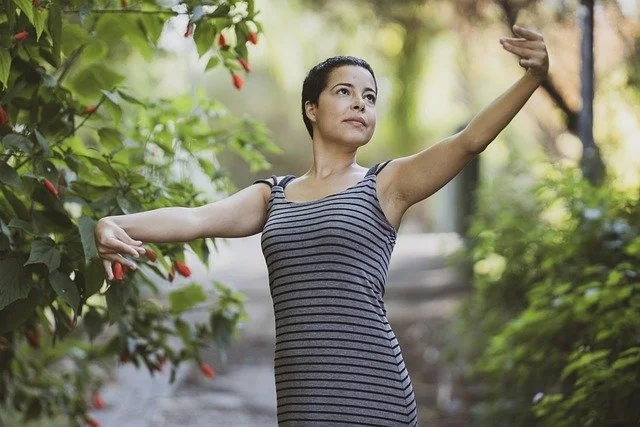As we come out of the darker winter months, and begin to feel the warmth of spring upon us, we, as all of nature, may come more alive, waking up to new possibilities and growth. Yes, we humans, just...

As we come out of the darker winter months, and begin to feel the warmth of spring upon us, we, as all of nature, may come more alive, waking up to new possibilities and growth. Yes, we humans, just like the plants and animals around us, cycle with the seasons. Longer days can bring renewal and aliveness, and perhaps more movement.
This idea of being nature has deeply impacted the way that I think about and address trauma work, both as a healer and someone who is healing. It was when I heard of the work of Peter Levine, founder of Somatic Experiencing, a naturalistic and neurobiological approach to treating trauma, that I began to understand the power of listening to the body and its innate wisdom. With support, I came to know and befriend my body, in turn gaining access to additional resources that allow me to navigate the ups and downs of life with more ease.
In the book, Waking the Tiger, Levine describes the way in which animals in the wild respond to threat events, and move through a full nervous system response cycle, after which they are able to go on with their day without a care, even when they were almost lunch a few minutes prior. Sometimes this happens through twitches, shakes, trembling, along with many other physiological responses. Animals innately complete this full cycle, however humans can often avoid, ignore, or bypass its completion.
If we as humans haven’t had a chance to complete the trauma response cycle after a threatening event, we can get stuck or ping pong between habitual survival responses, such as hypervigilance, disassociation, aggression, avoidance, feeling frozen or stuck, to name a few. Although these responses were and can continue to be important in the face of threat, they can also be quite distressing when they become pervasive or chronic and may lead to challenges with digestion, sleeping, energy levels, and mood. Our responses can also deeply impact our relationships with others, affect our outlook on life, and disturb our sense of self. These experiences can be very disruptive to the flow of our lives, and while we can’t change the past or what we have gone through, we can change how we relate to them and feel in the present moment.
One thing I offer when working with people who are struggling with trauma is to help them find ways to restore a felt sense and reconnect with their bodies. So often it can be challenging or scary for those who have experienced trauma to feel into the body, as it may be a place of discomfort, pain, or disconnecting from it was an adaptive way to get through their situation. However, slowly and with care there are ways to come back to connection.
Movement is just one option we can use to reconnect with and restore a felt sense in the body, which can assist in completion of the trauma response cycle, and allow our nervous system to come back to its restorative mode of rest. Once we learn the tools and resources to allow our trauma to be processed, we can shift into a deeper sense of knowing and peace and come home to ourselves.
This video shares just some examples of how we can use movement to support our healing.
Movement practices:
? Diaphragmatic Breathing or Belly Breathing.
? Swaying, Swinging, Rocking, or Spinning
? Shaking
? Yoga
? Qi Gong
? Walking
? Dance and/or Intuitive Movement
I invite you to try these practices and as you do to explore the internal landscape and messages of your body, through the subtle sensations. Try to suspend judgment and be curious.
? Can you notice any areas of tension or openness, heaviness or lightness?
? Are there any textures or temperatures? Are there any shapes, colors, or sounds?
Perhaps you can sense tingles, pounding, or settling.
? What’s it like for you to move?! What is moving inside you?
As you do this work, know that emotions will likely come up. See if you can welcome them, tend to them, and watch them move and shift as well.
***NOTE***
These practices can be modified to account for ability and comfort. Movements can be as large or as small, fast or as slow as you’d like and I invite you to play with that. Find what feels good, notice what doesn’t feel so good. Every BODY is different. Honor your limits. Take what you need and leave the rest.
I am currently taking new clients. If this body of work resonates with you, let’s have a consultation call. I’d be honored to be your partner in exploring this beautiful vessel that is uniquely you. You may contact me at sarah@anxietytraumatherapy.com or 619-272-6858 x711.
Some Resources:
Community Yoga in Balboa Park: The Om Experience
Shake and Shine Fest at Mission Bay on April 15th, 2023












